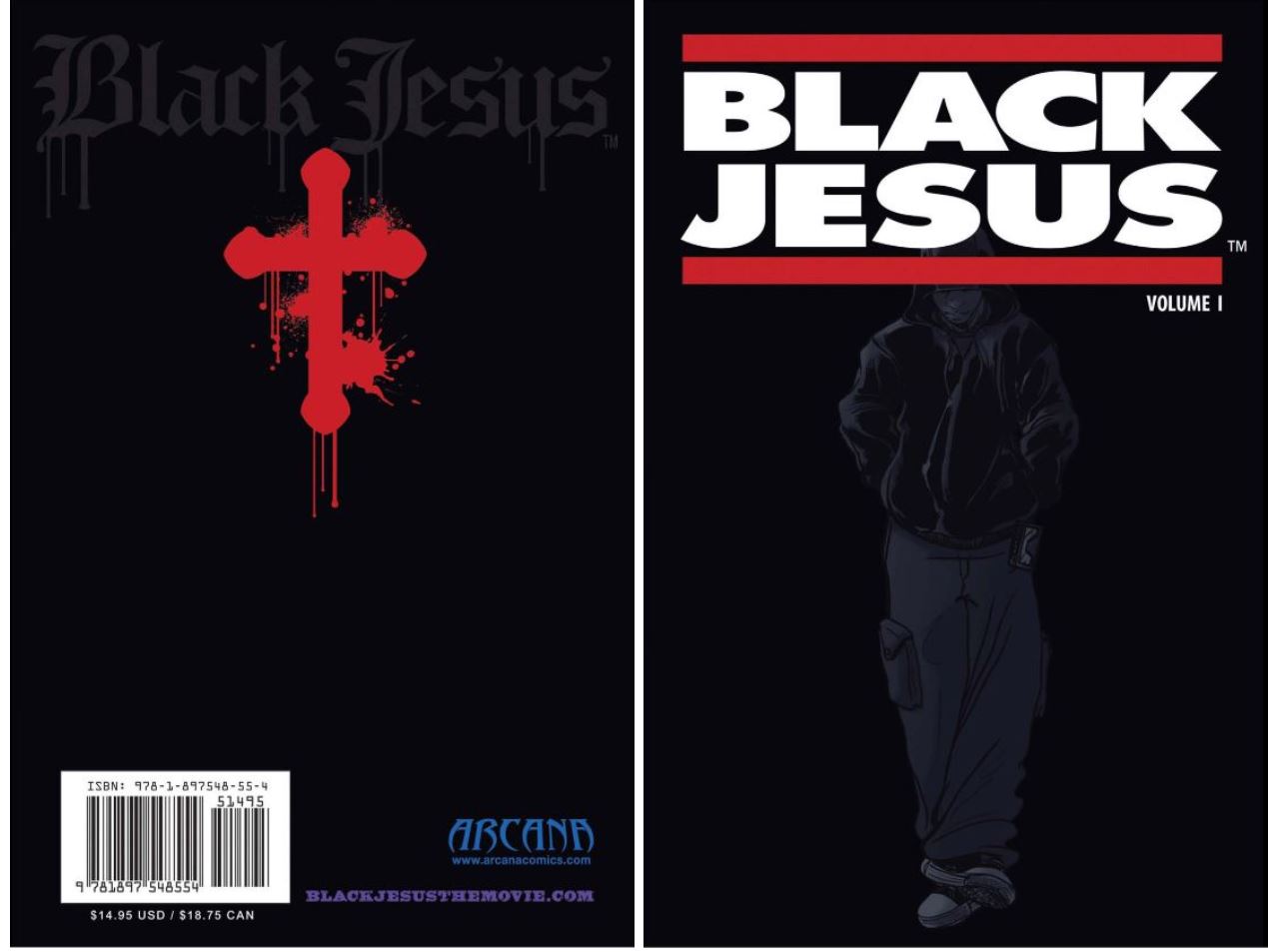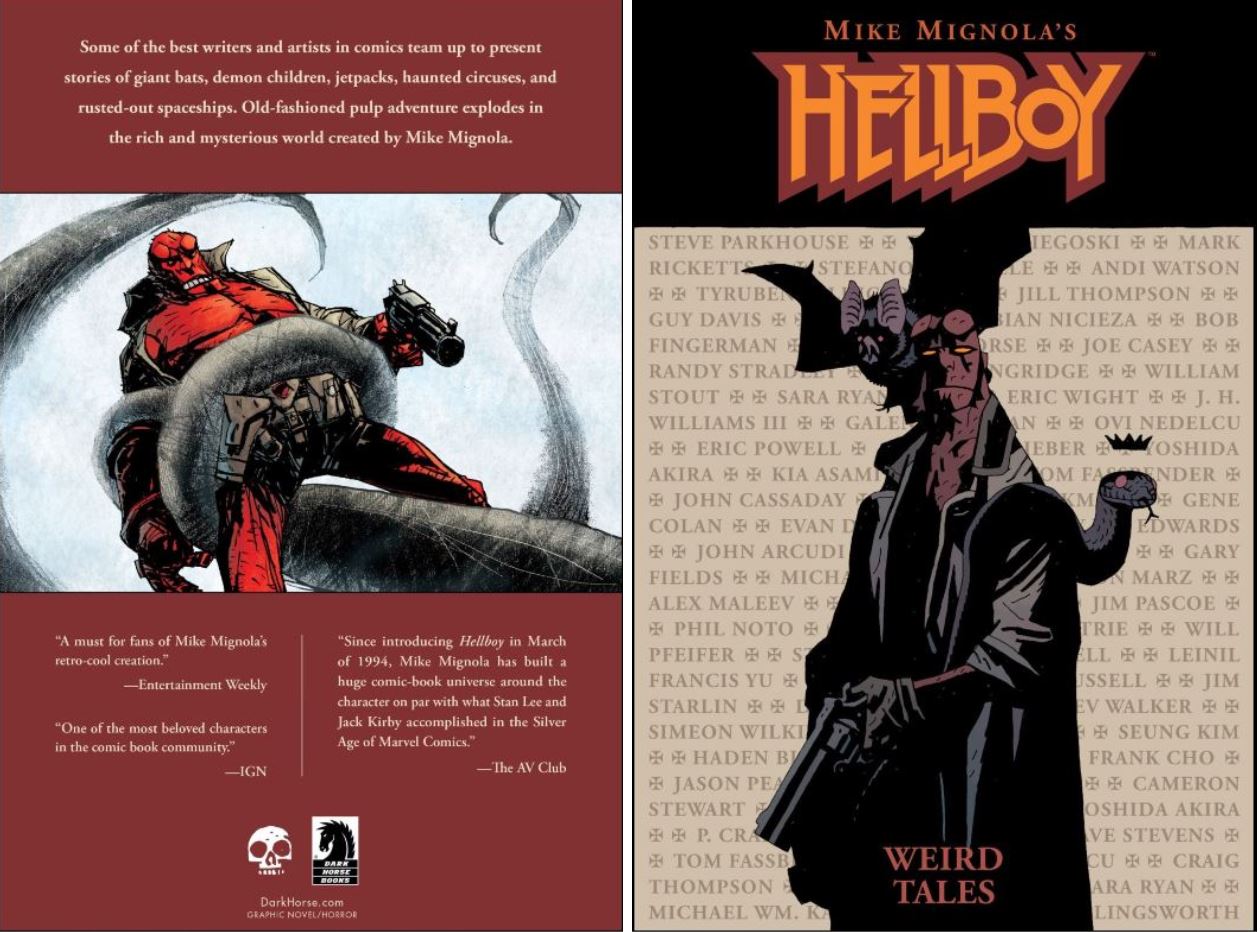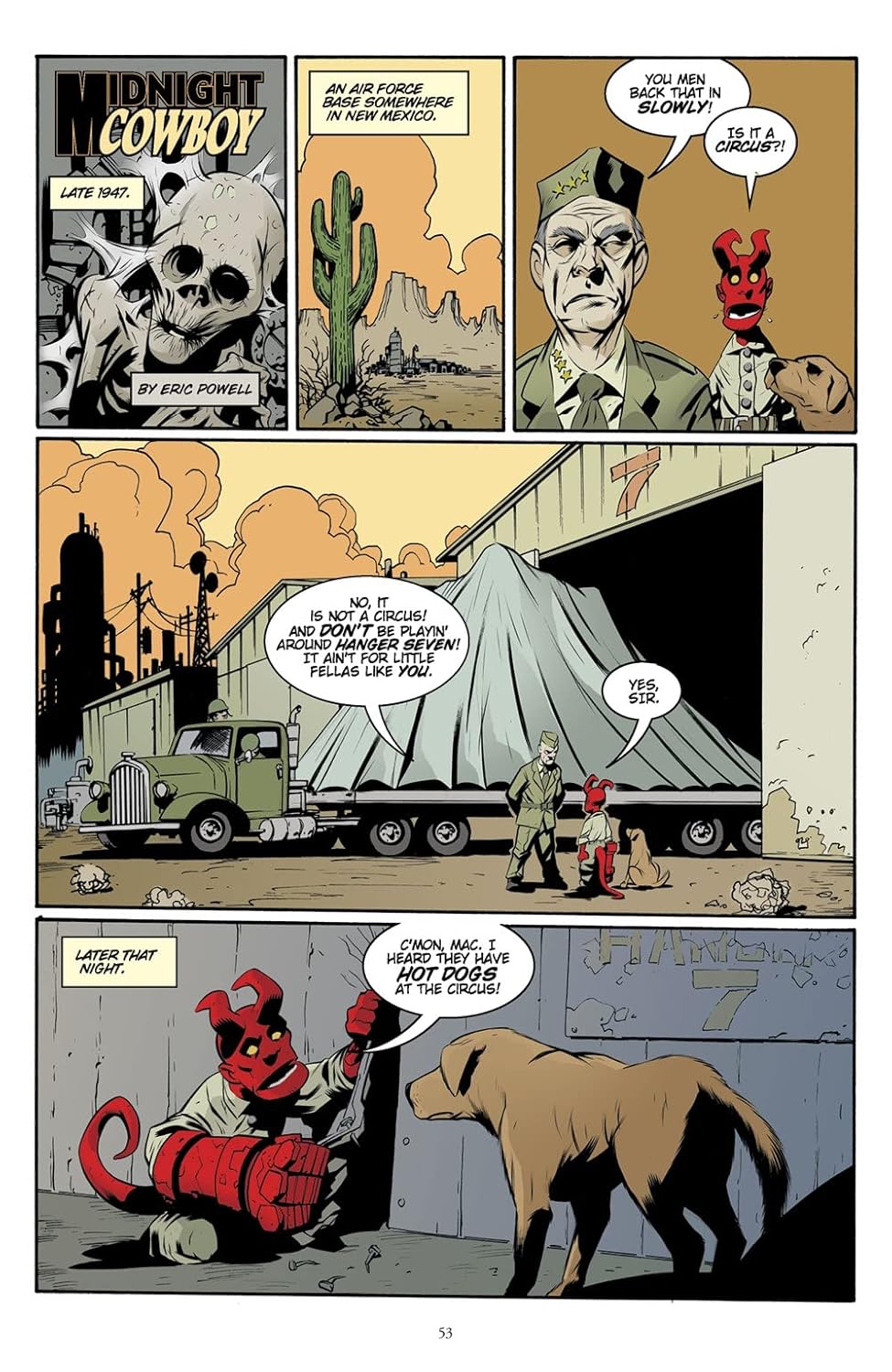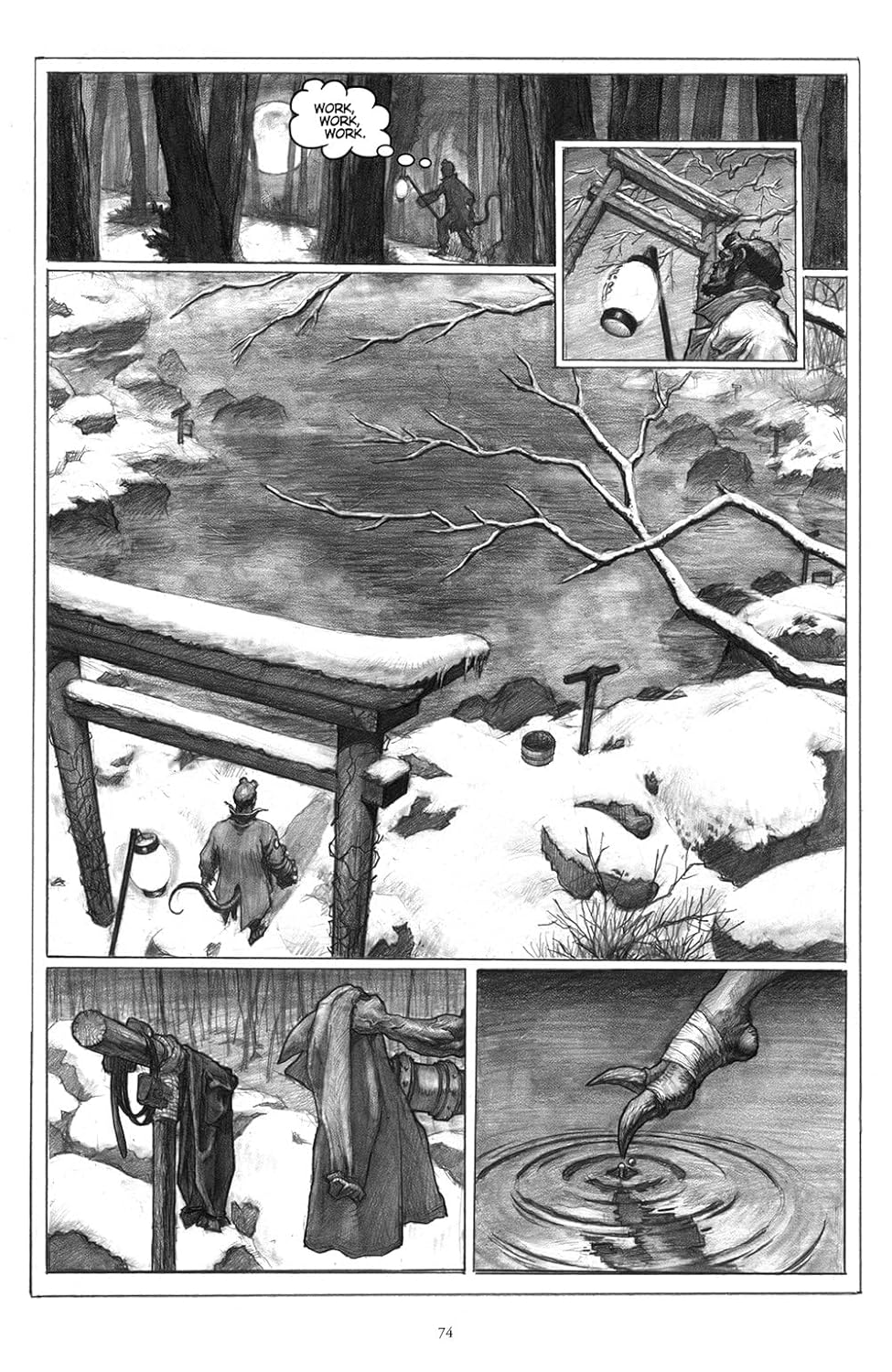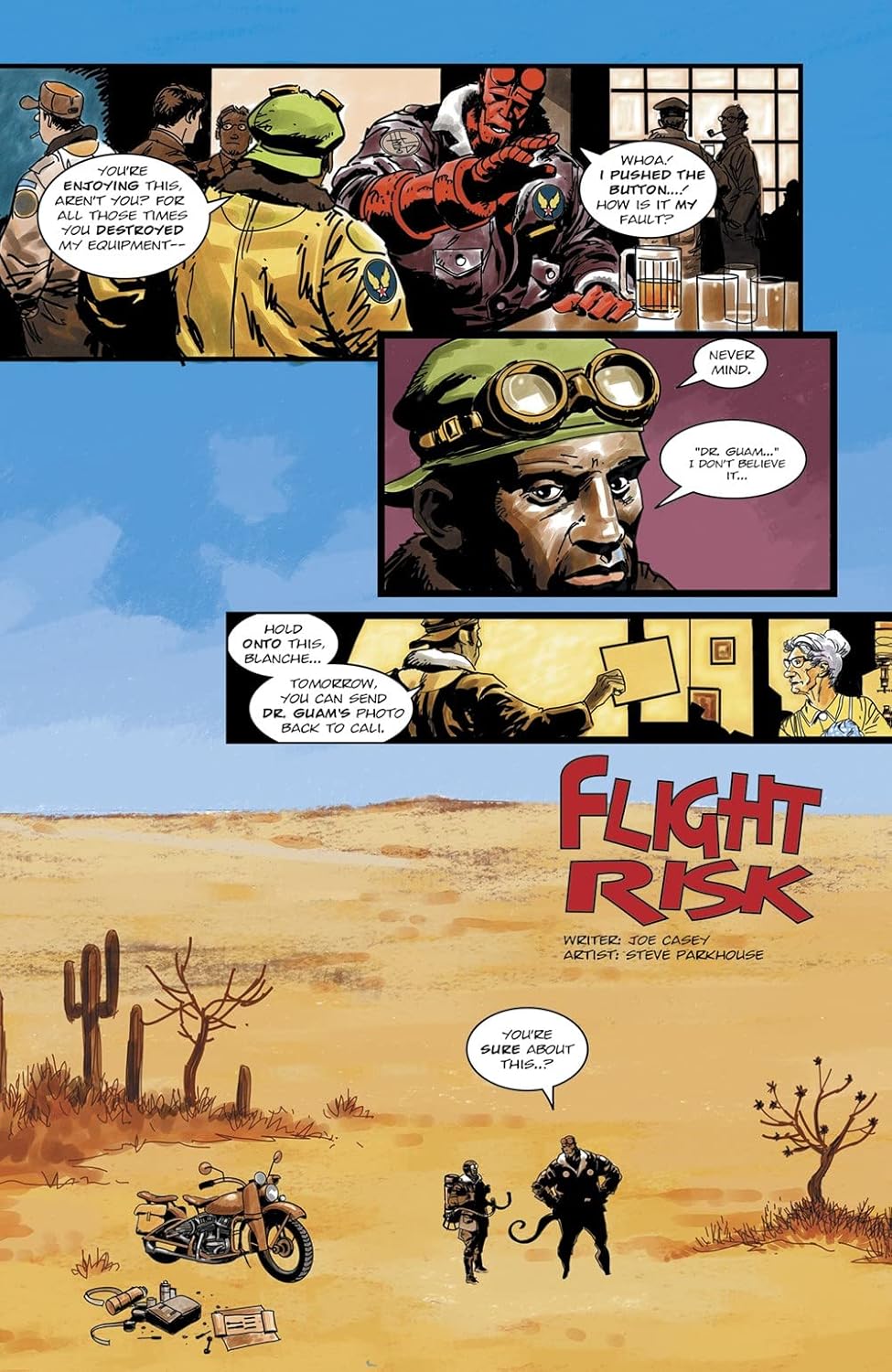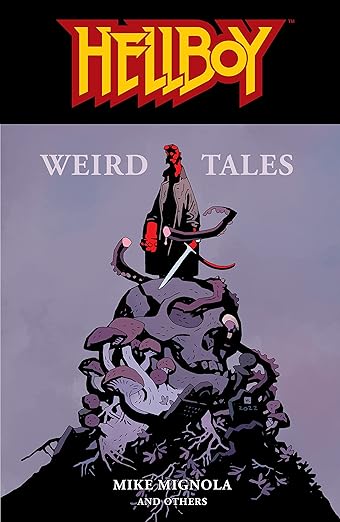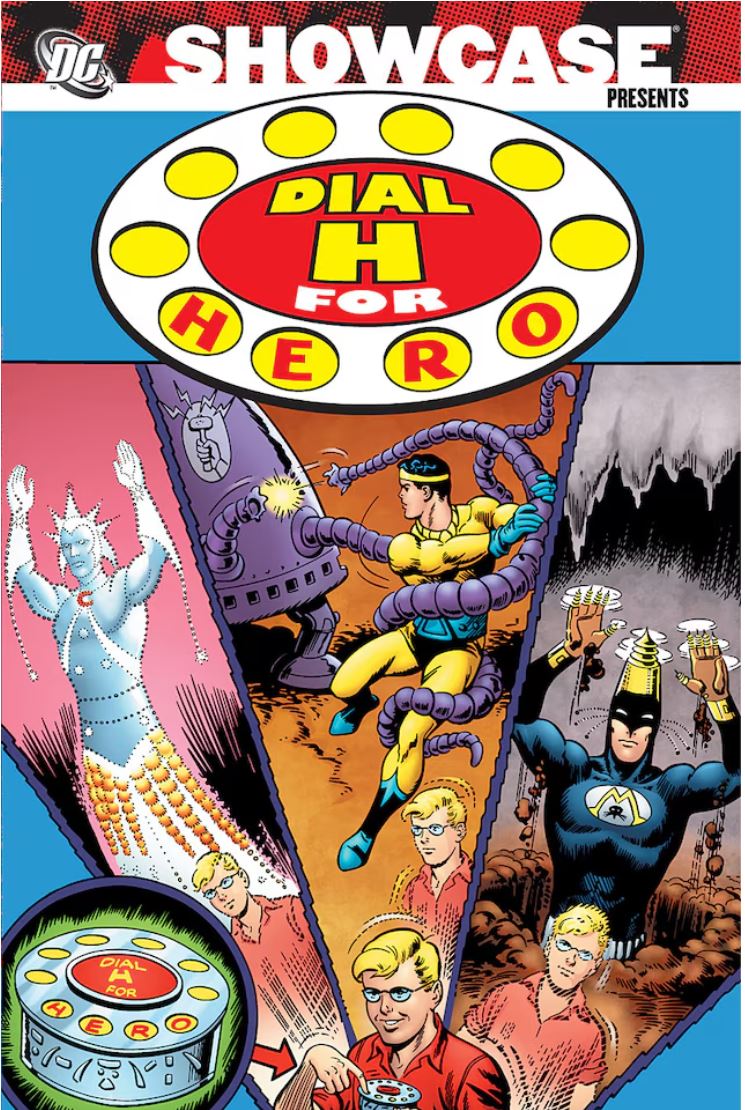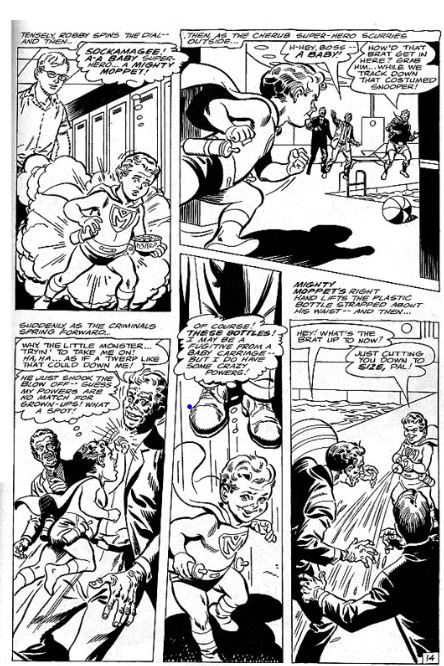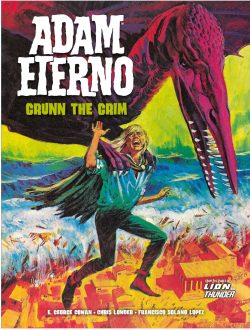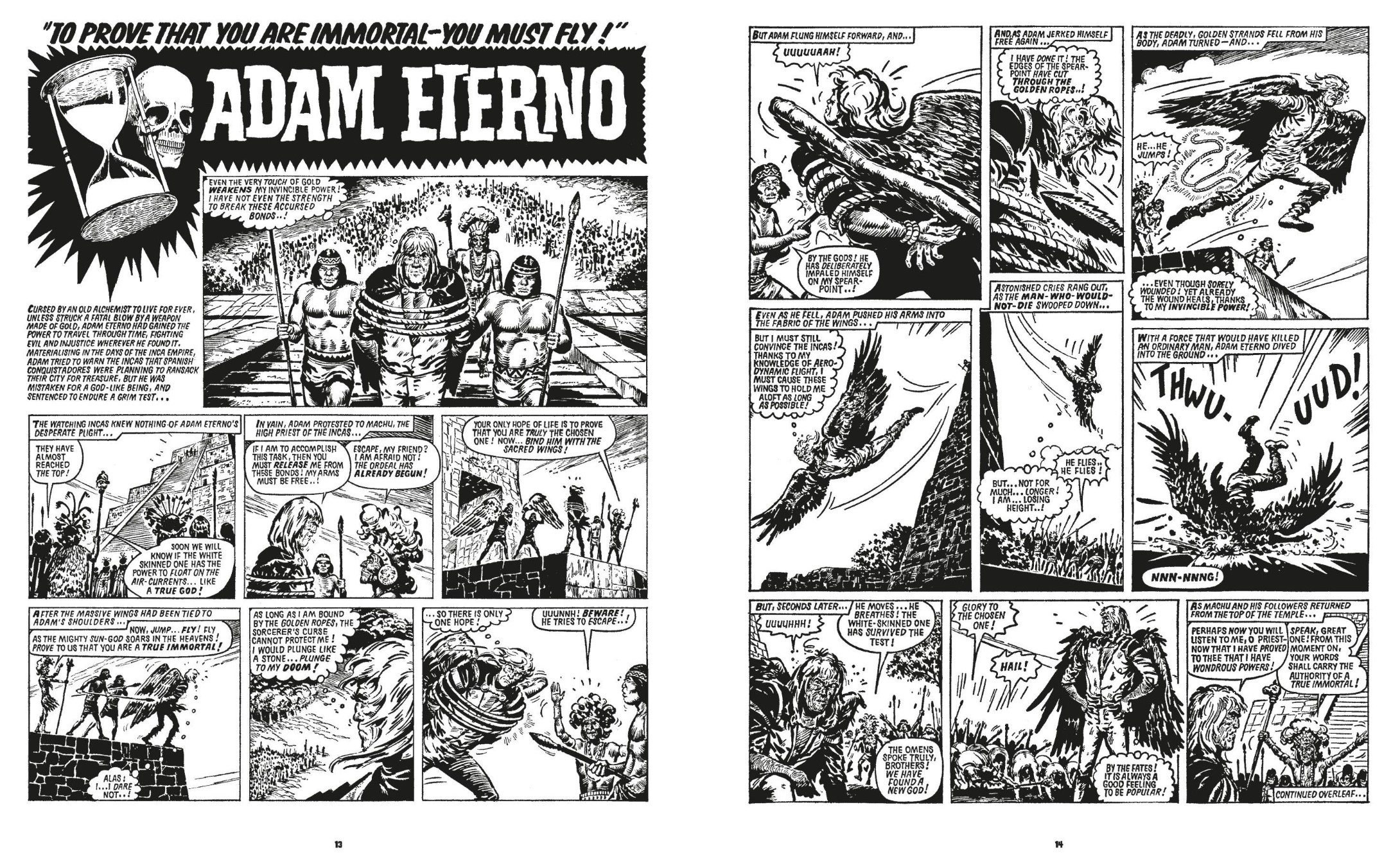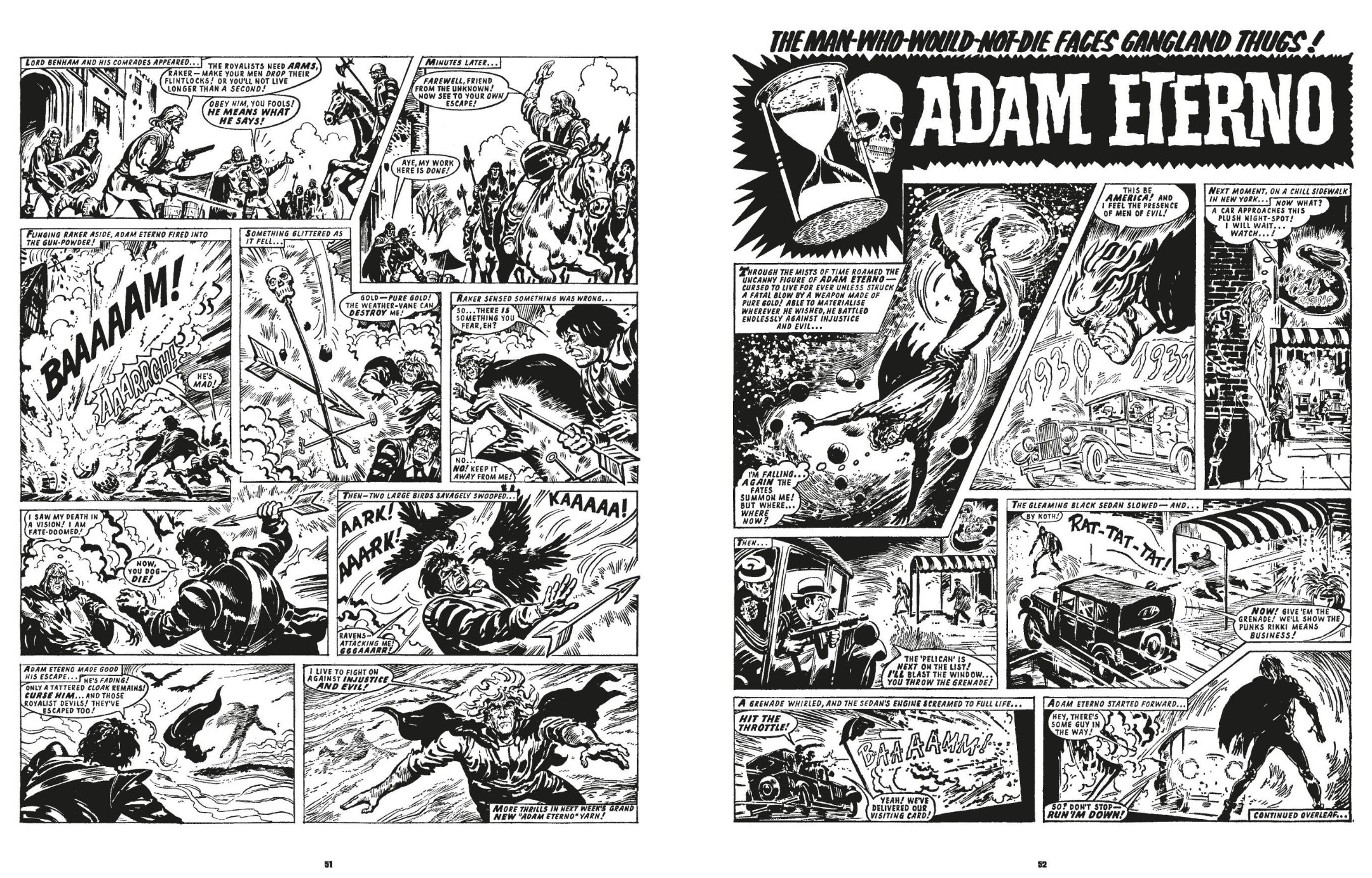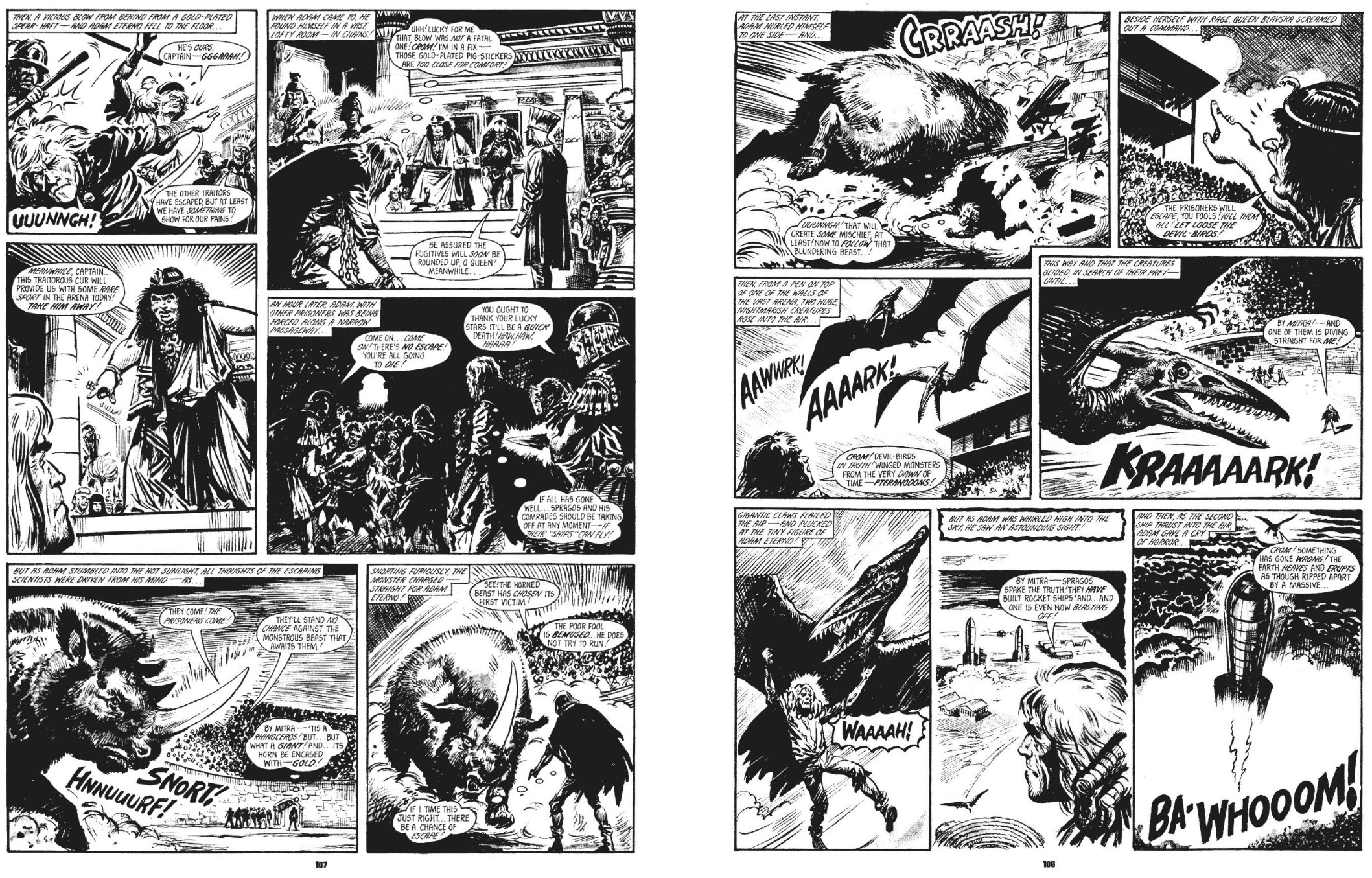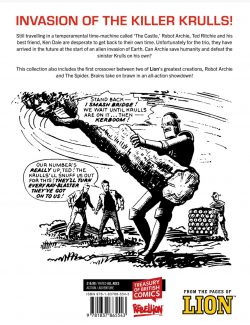

By E. George Cowan, Ernest “Ted” Kearon, Davis Harwood, with Garry Leach, Geoff Campion & various (Rebellion Studios)
ISBN: 978-1-83786-554-3 (HB/Digital edition), 978-1-83786-626-7 (Webshop HB)
This book includes Discriminatory Content produced in less enlightened times.
Win’s Christmas Gift Recommendation: Timeless Fantasy Masterpiece for Young and Old Alike… 9/10
British comics have always enjoyed an extended love affair with what can only be described as “unconventional” (for which feel free to substitute “weird” or “creepy”) heroes. So many stars and notional role models of our serials and strips have been outrageous or just plain “off”: self-righteous voyeur/vigilantes like Jason Hyde, sinister masterminds in the manner of The Dwarf or Black Max, arrogant former criminals like The Spider or outright racist overmen such as fearsome white ideologue Captain Hurricane…
Joking aside, British comics are unlike any other kind: having to be seen to be believed and always enjoying – especially when “homaging” such uniquely American fare as costumed crimefighters – a touch of insouciant rebelliousness…
Until the 1980s, UK periodicals employed an anthological model, offering variety of genre, theme and character on a weekly (sometimes fortnightly) basis. Humour comics like The Beano were leavened by action-heroes like The Q-Bikes or General Jumbo whilst adventure papers like Smash, The Eagle, Hotspur or Valiant offered palate-cleansers The Cloak, Grimly Feendish, Mowser and sundry other titter-treats.
Prior to the advent of game changers Action, Misty and 2000AD, British comics seemingly fell into fairly ironclad categories. Back then, you had genial and/or fantastic preschool fantasy; licensed entertainment properties; action; adventure; war; school dramas; sports and straight comedy strands. Closer examination would confirm there was always a subversive merging, mixing undertone, especially in such antihero series as Dennis the Menace or our rather strained interpretation of superheroes. Just check out The Phantom Viking, Kelly’s Eye or early Steel Claw stories…
After post-war austerity, the 1950s ushered in revolution. With printing and paper restrictions gone, a steady stream of titles emerged from companies new and old, aimed at the many different levels of childish attainment from pre-school to young adult. When Hulton Press launched Eagle in April 1950, the very concept of what weeklies could be changed forever. That oversized prestige package with photogravure colour was exorbitantly expensive, however, and when venerable London-based publishing powerhouse Amalgamated Press retaliated, it was a far more economical affair. I’m assuming AP only waited so long before the first issue of Lion launched (cover-dated February 23rd 1952) to see if their flashy rival was going to last.
Just like Eagle, Lion mixed prose stories, features and comic strips. It even offered its own cover-featured space-farer in Captain Condor – Space Ship Pilot. Initially edited by Reg Eves, the title ran 1156 weekly issues until 18th May 1974 when it merged with sister-title Valiant. Along the way, in the tradition of Darwinian British publishing – which subsumed weaker-selling titles to keep popular strips going – in 1959 Lion absorbed Sun then Champion (1966) before swallowing Eagle in April 1969, before merging with Thunder in 1971. One of the country’s most popular and enduring adventure comics, the last vestiges of Lion only vanished in 1976 after Valiant’s amalgamation with Battle Picture Weekly.
Despite that demise, there were 30 Lion Annuals between 1953 & 1982, all benefitting from the UK’s lucrative Christmas market, combining a variety of original strips with topical and historical prose adventures; sports, science/general interest features; short humour strips and – increasingly from the 1970s – reformatted reprints from IPC/Fleetway’s back catalogue.
The Jungle Robot debuted in Lion’s first issue, created by incredibly prolific E. George Cowan (Ginger Nutt, The Spider, Saber, King of the Jungle, Smokeman/UFO Agent, Nick Jolly the Flying Highwayman, Paddy Payne, Girls’ Crystal Libraries) and drawn by Alan Philpott (The Deathless Men/V for Vengeance, Look-In, Klanky). It enthralled readers for a couple of months before abruptly vanishing with the August 9th issue.
Other than an appearance in the 1955 Lion Annual, that was it until January 19th 1957 when the mechanical marvel was revived and revised by Cowan & A. Forbes prior to veteran artist Ernest “Ted” Kearon (Spot the Clue with Zip Nolan, The Day the World Drowned, Steel Commando and DC Thomson’s Morgyn the Mighty). He signed on in 1958 and soldiered on for most of the next 17-ish years. This time the mighty mouthed mechanoid became one of the most popular and well-remembered heroes of the British scene, successfully syndicated all across Europe and around the world. Hopefully this second compilation of later material will be soon supplemented by earlier annals …
Reprinting stories from 18th January 1969 to 18th October 1969, plus yarns from Lion Annual 1971 and Lion Holiday Special 1980 these latterday adventures of explorer/ troubleshooters Ted Ritchie, Ken Dale and arrogant, smug, self-absorbed yet paternally benevolent super-robot Robot Archie resume and take an even more outrageous turn here.
The former Jungle Robot was for a very long time the greatest achievement of Ted’s inventor uncle Professor C. R. Ritchie. Partnered with him/it the lads battled monsters & aliens, foiled crooks and faced disasters. Then the Prof left them The Castle. This inhabitable two-storey faux chess piece could take them anywhere in history and even into the future… and inevitably the boastful ‘bot commandeers it and discovers the wonders and perils of all spacetime…
After joining a peasant’s revolt in the 14th century, and ending an alien invasion in the 21st, they fetched up fully lost and out of control in 18th century England to face Highwaymen and corrupt judges, pirates and more. Now at the mercy of raging chronal currents, the wanderers arrive thousands of years into Earth’s menacing tomorrows to find a paradise run by genetically pacifistic humans who look like wise children. This promised land is serviced by billions of mechanical servants but ‘Robot Archie in the World of the Future’ (by Cowan & Kearon for Lion 18th January to 26th April 1969) coincides with another extraterrestrial landgrab.
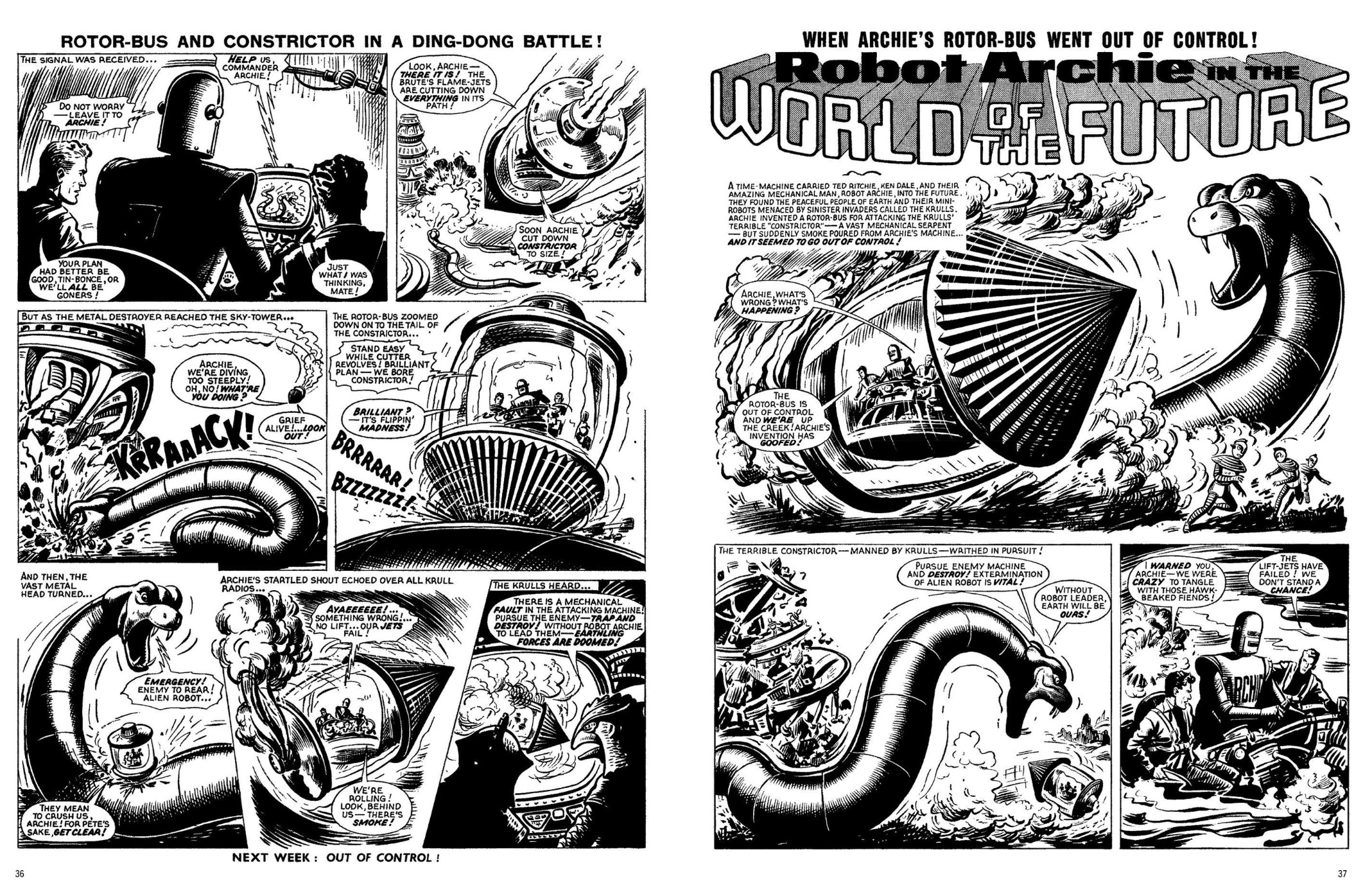
With barbarous conquerors the Krull resolved to possess and use up the world, it falls to Ted, Ken and especially super-general Archie to protect what humanity has become, retrain billions of robots into an army and repel the invaders. Of course, with no organised military or armaments, their arsenal of liberty must come from museums… as do the hands-on tactics the metal commander-in-chief inflicts on the aliens. These sorties have never been seen before and the Krull have no idea how to counter then…
After a ferocious struggle Earth is safe and free again, albeit forever changed, and the time trio take off on the hope of finding their home era again. The next landing initially seems to satisfy them – a lush island with recognisable architecture and normal looking people. Sadly, a series of unexplained events soon show otherwise…
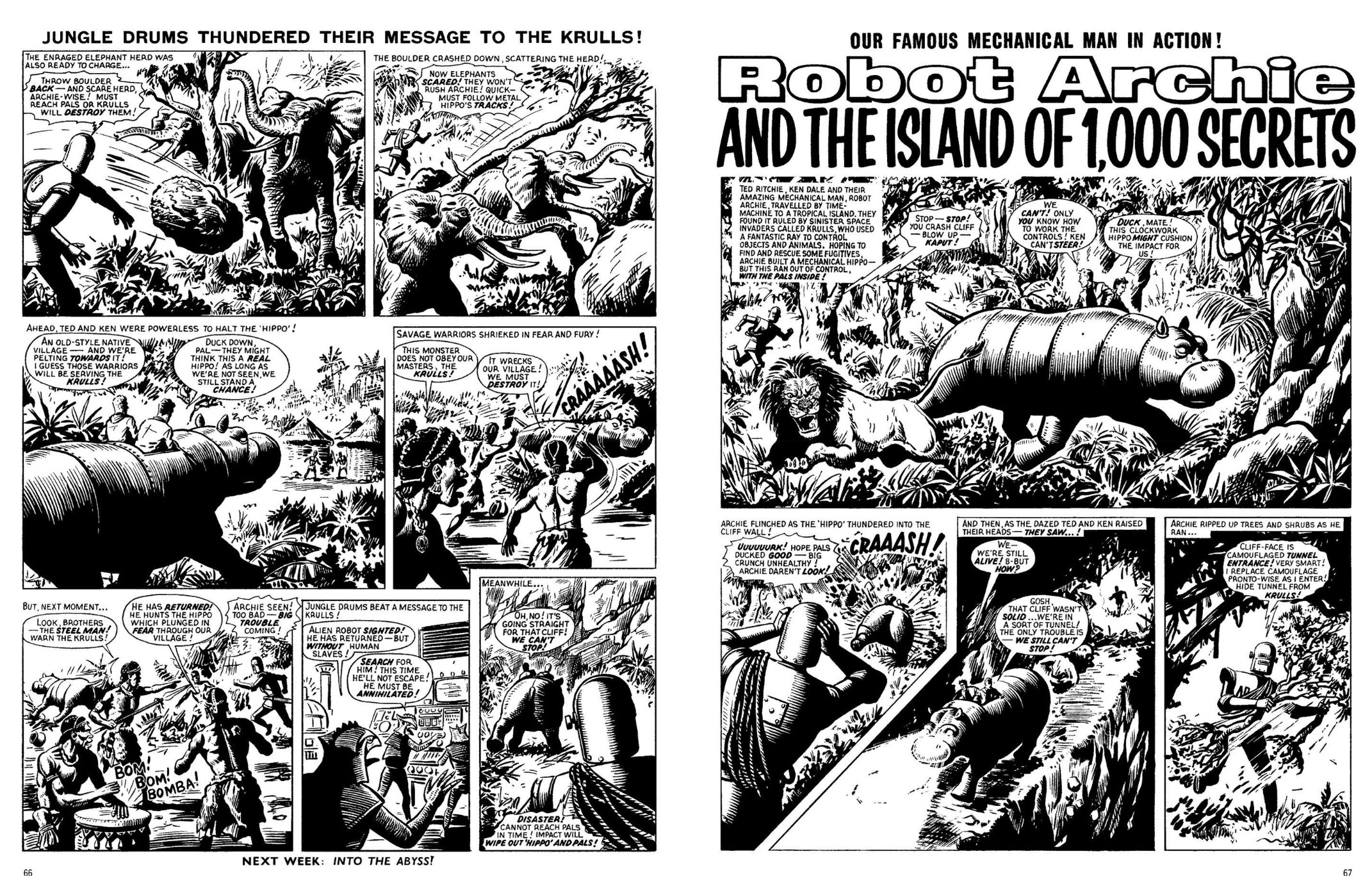
Running from May 3rd to August 2nd, ‘Robot Archie and the Island of 1,000 Secrets’ pits the lads against ghostly phenomena, animated machinery, possessed animals and “hostile natives”, before a succession of hairsbreadth escapes expose the whole locale as a testing ground for some scurrilous aliens formerly beaten but now ready for a second round of malice and mayhem. Bombastic, bellicose Archie is more than happy to supply it…
After a protracted struggle that slips from mystery to sci fi fantasy, the intruders are defeated and humans liberated, with the restless nomads taking off again and landing in a pit of genuine horror…
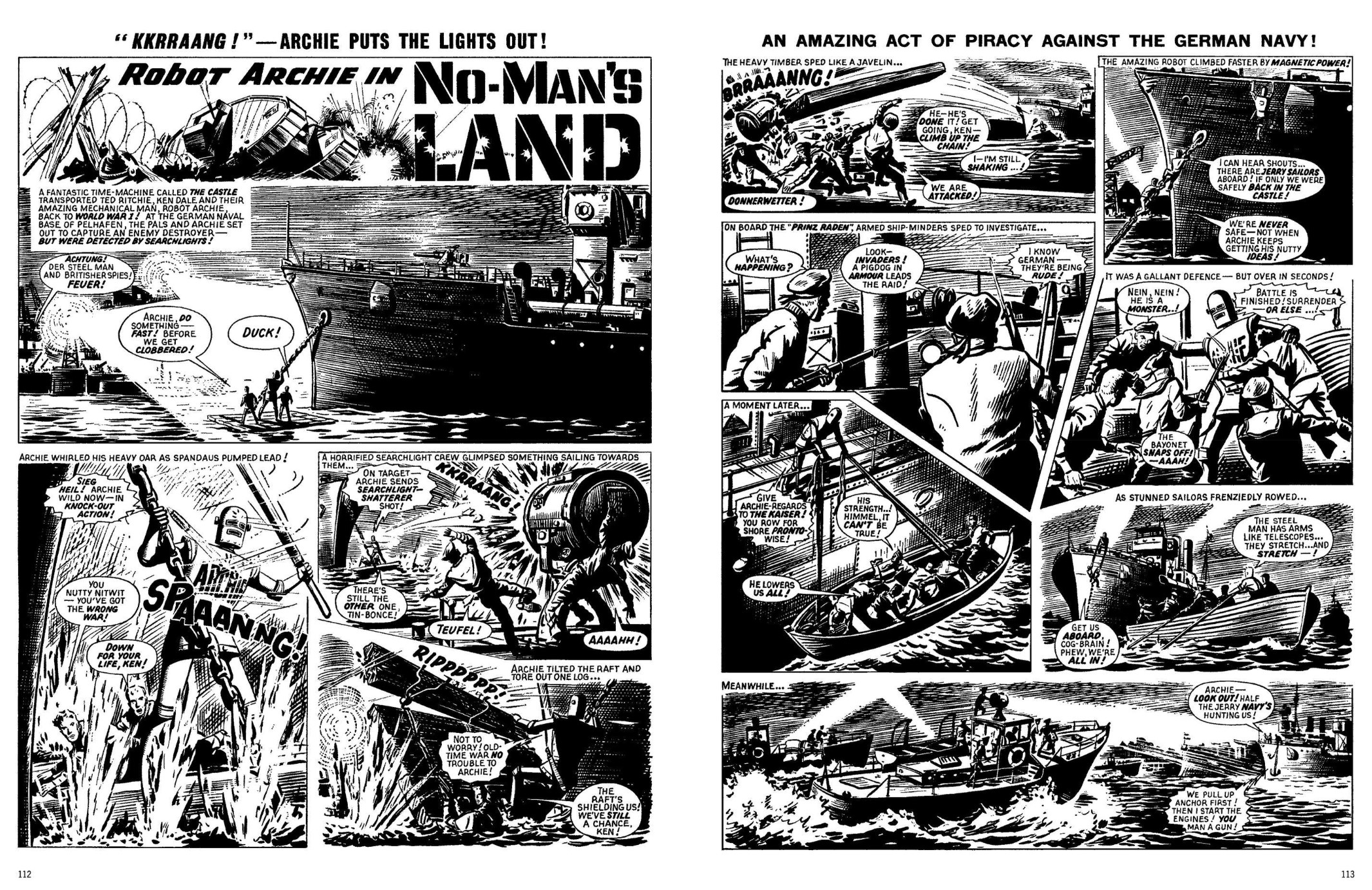
Concluding around that year’s Remembrance Sunday commemorations ‘Robot Archie in No-Man’s Land’ ran from 9th August – 18th November 1969 and dropped the pals in the middle of a mud-drenched clash for a few feet of trench. In the clash Archie was damaged and went berserk whilst ununiformed Ted and Ken are instantly assessed as spies and arrested. In an age of technological breakthroughs the Germans, after being pounded and petrified by “the Steel Man”, concentrate all their efforts on capturing it, leading to massive and cathartic comics Hun-bashing (with Archie excelling on land at sea and in the air) before finally rescuing his human companions, un-impounding the Time Castle and taking off for fresh pastures and fewer explosions…
To Be Continued…
With epic covers by Geoff Campion & Garry Leach, the ‘Extras’ section of this mighty monument to weird fun begins with a brace of short complete tales from Lion Annual 1971 Special 1969 and Lion Holiday Special 1980 respectively. ‘Robot Archie – The Steel Giant’ by Kearon and an uncredited author finds the time-tossed trio in ancient Rome just as a usurper awaits three gladiator/assassins he’s hired sight unseen to kill Caesar. He can’t miss them, one of them is a veritable colossus who always wears full armour…
The general is cautious however and sets them tasks to prove their merit, but while they are acing those, the real hitmen arrive. Whoops!
Only a decade later, and three years into Fleetways’ revolution of UK comics, Archie was long gone and a figure of fond nostalgia. Thus he was cheekily revived for a team/up clash with a fellow veteran. Delivered by an unknown writer and Dave Harwood, ‘Robot Archie vs the Spider’ gave everybody what they wanted as the icons tried to beat the stuffings out of each other in a two-part saga that delivered on action but promised a continuation that never came…
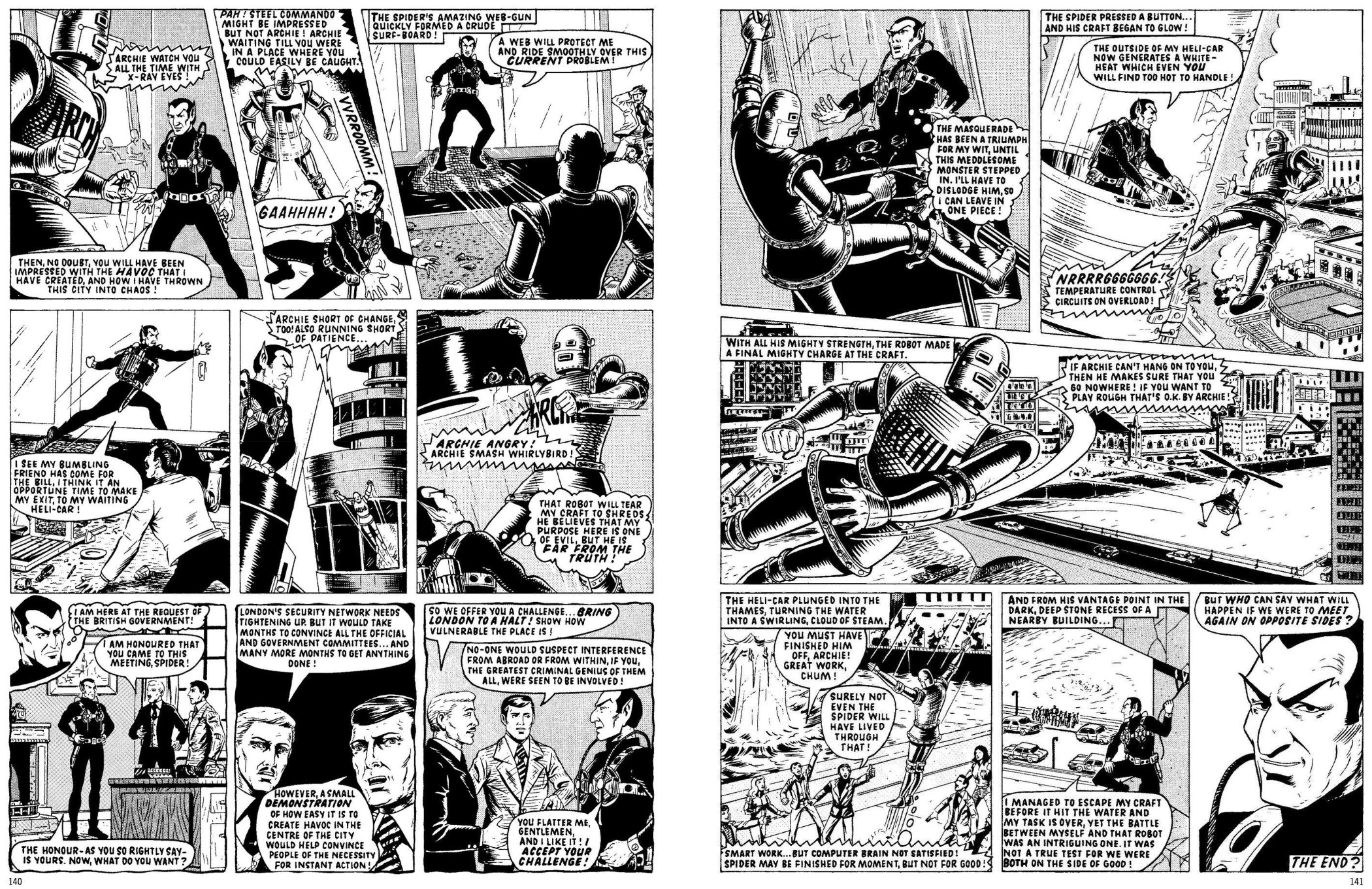
The memory storm concludes with a too-short Covers Gallery and biographies.
Now part of Rebellion Publishing’s line of British Comics Classics, Robot Archie is a landmark of UK fantasy long overdue for revival. I hope not much time passes before we see all the old stories back again…
© 1969, 1970. 1980 & 2025 Rebellion Publishing IP Ltd. All Rights Reserved.
Today in 1887, British cartoonist George William Wakefield was born. You’ve never heard of him but he delighted your great grandparents with his Laurel and Hardy comics. In 1947, Doug Murray was born, whom we probably know best for writing The ‘Nam.
Today in 1977 saw the last published episode of Li’l Abner and in 1997, master Archie artist Samm Schwartz prat-falled (pratfell?) his way offstage for the last time.
In 2003, Flash co-creator and Golden Age stalwart Harry Lampert died. You don’t have to follow Now Read This, but you really, REALLY should read the comics we’re plugging here.

